Influenced by its geography, its climate, as well as its neighbours and history, Vietnamese cuisine has a unique identity that is particularly noticeable in its street food.
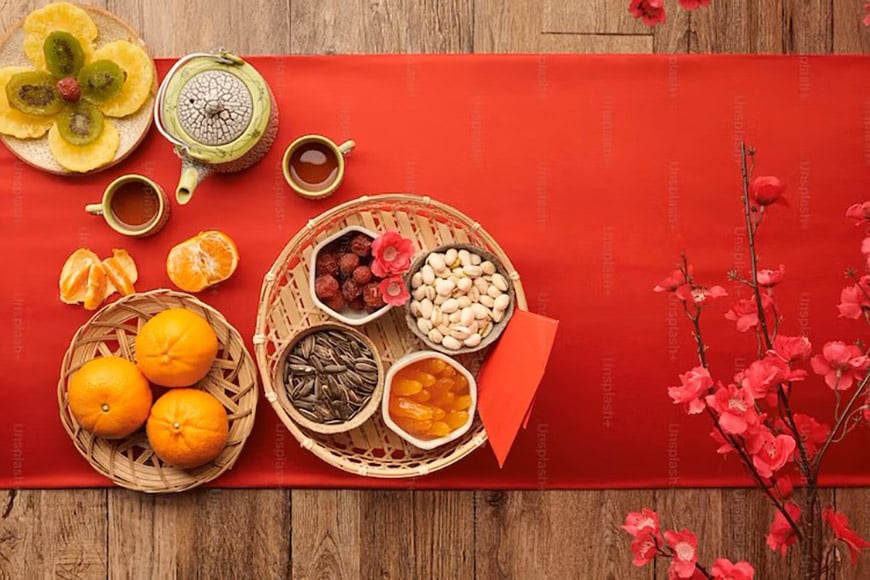
Vietnamese cuisine has evolved over time - Photo : Unsplash
Vietnamese cuisine, a brief introduction
The country’s cuisine is based on the principle of balance, and this is reflected in the way that the dishes are prepared. Vietnamese cuisine has evolved over time, shaped by its geography, climate, neighbours and history. The other dominant natural elements was profuse rivers that allowed for intensive agriculture, and the sea, which provide fish and seafood. Without forgetting the influence of workers from all over the country, who settled in deltas, who carved rice terraces on the mountainside and domesticated the highlands.
Paradoxically, the unique identity of Vietnamese cuisine comes from the fusion of Chinese and French cuisine, with Hindu, Thai and Cambodian touches. It offers different variations depending on whether it is preparing in the north, the south out the center of the country with palanches. At the same time, it evolved as cooking tools became more sophisticated and influences from other countries became stronger. In addition, the Vietnamese people have a long history of agriculture, and this is reflected in their cuisine. Thus, rice has always been a mainstay for the Vietnamese people, and it is utilized in a variety of recipes, while the cuisine evolved as foreign influences became stronger.
Vietnamese Cuisine, the most popular street foods
Vietnamese street food is a must-try for anyone visiting Vietnam. Here are some of the most popular Vietnamese street foods:
Pho
This world-famous soup is a noodle soup that is popular throughout Vietnam.
Considered as the quintessential Vietnamese dish, pho is referring to the type of flat rice noodle used in the recipe. In a robust beef stock, they juggle medium-rare slivers of beef or cooked chicken.
Did you know that it differs from north to south ? The more popular of the two widely known varieties is pho Hanoi. Native to the north, it is distinguished by a clear broth with a pinch of lemon and slices of bird’s eye pepper. The southern variation, pho Nam, has a deeper broth and comes with a bouquet of fresh herbs, including soy sprouts, basil, and mint. The broth and the time spent simmering are the secrets to an excellent bowl of pho. The broth is steeped with star anise, clove, and cinnamon for at least 8 hours to give it a natural sweetness. This dish is available on practically every street corner, generally for breakfast.
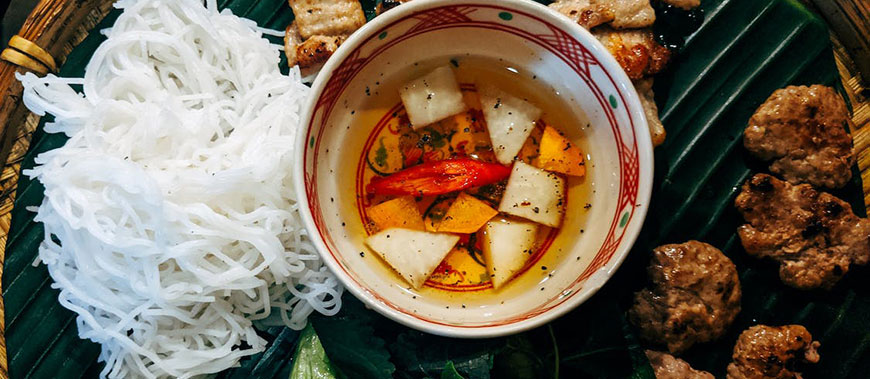
Bun cha is the greatest option for a lunch in Ha Noi ! - Photo : Pexels
Bun cha
If Pho is the most famous cuisine in Vietnam, bun cha is the greatest option for lunch in the capital. To be convinced, simply see (and smell!) the volutes full of smoke after 11 a.m., when Hanoi restaurants begin to grill little seasoned pig patties and slices of marinated pork belly over a charcoal brazier. The bites are grilled and crispy before being served with a bowl of fish soup, a basket of herbs, and a quantity of rice noodles. Bun cha is frequently served with nem cua be - fried crab spring rolls.
Xoi
Sticky rice is more of a meal or snack in Vietnam than an accompaniment. The sticky rice is generally served with a variety of mixtures: Vegans and vegetarians can enjoy Xôi with muoi vung (ground sesame and peanuts) or sugar, while meat eaters can enjoy Xoi thit kho tau (sticky rice with Chinese braised pork) and Xoi with liver pate, sausage, fried eggs, char siu, birds, or roasted piegons. It is almost always presented with a topping of dried shallots. Vendors propose it in early morning markets or on the street
Banh mi
The French may have brought the wand with them, but Vietnam takes it to another level. This iconic dish of Vietnamese street food varies depending on where you are.
In the north, chefs stick to the basics of carbohydrates, fats, and protein – understand bread, margarine, and pâté – but the further south you go, the more cheese, charcuterie, pickled vegetables, sausage, fried egg, fresh cilantro and chili sauce.
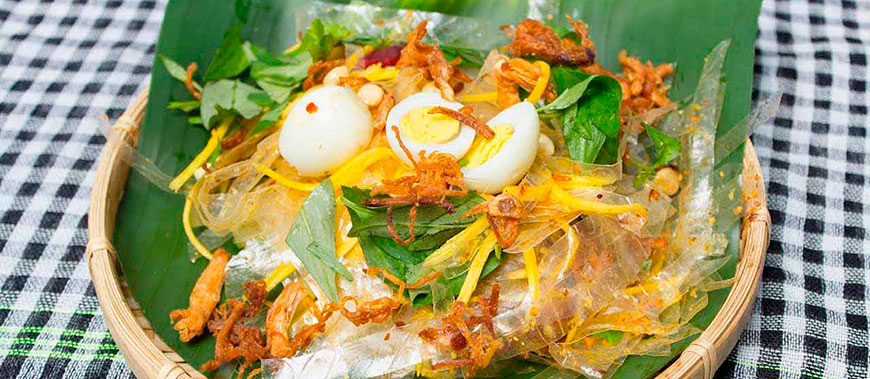
One of the favorite snacks of young people - Photo : Internet
Banh trang tron
One of the favorite snacks of young people, banh trang tron is a rice paper salad that is made with shredded green mango, papaya, and carrots. It is flavored with fish sauce, chili, and peanuts and everything is mixed with a sweet and sour sauce based on fish brine, we add a few drops of lime and chili.
Banh xeo
A good banh xeo is a crispy pancake that is recognizable by its pork, shrimp and soy sprouts filling, as well as its accompaniment of fresh herbs, the signature of an authentic Vietnamese dish. To taste this crepe made in Vietnam as one like a local, cut it into mouths that you will wrap in rice paper or a leaf of lettuce then dip it in the special sauce that the seller, on the sidewalk, will have prepared for you.
Goi Cuon
In Vietnam, Vietnamese spring rolls are something people never did at home. Too many ingredients and too complicated to do. It’s so much easier to go to a street vendor!
Healthy and delicious, Goi cuon or Nem cuon are fresh spring rolls that are made with rice paper (Goi cuon literally means salad rolls). They are stuffed with shrimp, pork, vermicelli and fresh herbs Dip it in the dip based on peanuts and hoisin sauce. Tasty and fun to eat, they are perfect as a family meal where everyone rolls their own "nem" at the table.
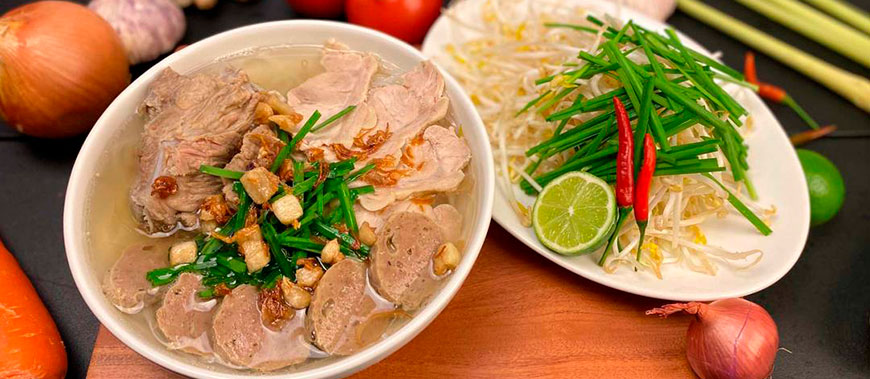
Hu Tieu Go is a very popular street food in Saigon - Photo : Internet
Hu Tieu Go
Hu Tieu Go is not only a popular street meal in Saigon, but it also reflects a characteristic or a familiar image of the city that is today known as Ho Chi Minh-city. Hu Tieu Go is sold in little food carts that may be seen on pavements and busy streets till late at night. The seller will not have a permanent address or company location, but instead be mobile. To substitute the sound of shouting, they will knock bamboo sticks against one other. That is why it was given the name Hu Tieu Go; "Go" means "knock." When people in Saigon are hungry, they will eat this meal as a snack. “Knocked rice noodles” often contain less components than a bowl of noodles at a restaurant, with a little bit of everything, a handful of rice noodles (smooth white noodles as small as wonton noodles but much softer), some bean sprouts, and a few slices of tenderloin. thinly sliced pig patties, quail eggs, beef balls, vegetables, chives, dried onions, and a few plump, meaty, fragrant pork rinds the size of beans.
Com Tam
At the time, Saigonese ate the broken rice grains (those that remained after sifting the rice) that they couldn't sell. "Broken" rice is becoming a mainstay for working-class people. Preparing a com tam is a difficult task for a dinner of humble roots. Although it can be prepared in a variety of ways, the most common is com tam suon nuong op la. A fried egg is served with a caramelized grilled pork chop and a substantial serving of com tam. The dish is then topped with nuoc cham, a chile, fish sauce, and sugar mixture, and a drizzle of green onion oil. Marinated carrots and shredded daikon, cucumber and tomato slices, and fried pig rind are all garnished with shallots.
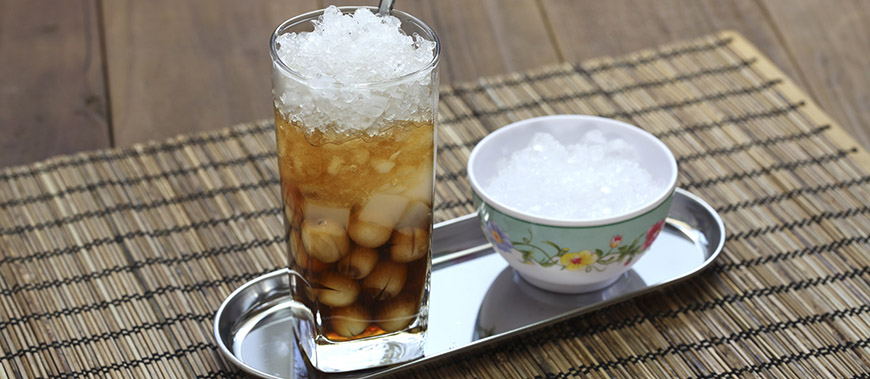
One of the best Vietnamese dessert that can be a snack too - Photo : Dreamstime
Che
This is a delicious dessert prepared with beans, fruit, and coconut milk. However, the name refers to any traditional sweet soup, beverage, pudding, or other custard-like delicacy cooked with either water or coconut cream and served hot or cold. Various jellies and fruits, beans and pulses, rice and grains, and even tubers and cereals are used to make che.
Che sweets are thought to have originated in Vietnam's central area, although they are now widely available throughout the country and cooked in infinite varieties. Because of its robust components, such as beans and sticky rice, they are a popular snack item typically offered in plastic cups at Vietnamese grocery shops.
Did you know that? This white bean and rice pudding with coconut syrup is usually served at Vietnamese family gatherings to commemorate a baby's first birthday.